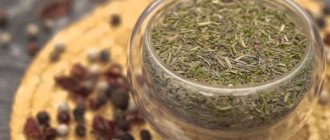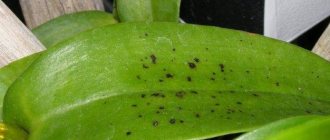Why do spathiphyllum leaves turn black, does it not bloom, or is it affected by various diseases?
The spathiphyllum flower is not a very fastidious plant and, subject to certain care rules, spathiphyllum is rarely affected by diseases and pests. However, anyone who is going to have this tropical plant in their home would do well to know the problems that may arise when growing it and how to eliminate them. Most of them can be recognized by the condition of the spathiphyllum leaves.
Problems arising when breeding spathiphyllum
- Spathiphyllum leaves turn yellow . There may be several reasons for this: direct sunlight on the spathiphyllum, lack or excess of moisture. In this case, you need to move the plant to a brighter place and adjust the watering regime.
Spathiphyllum also turns yellow if water with an excess amount of chlorine is used for irrigation. For irrigation, you need to use filtered or well-settled water. If the leaves begin to turn yellow after the spathiphyllum blooms, then there is no need to worry - this is a natural process of the plant’s life;
- If spathiphyllum leaves turn black , this can be caused by very dry air in the room. It is necessary to increase the number of sprayings, place the container with spathiphyllum in a tray with moistened pebbles (expanded clay, moss). A weekly warm shower will also help solve this problem. Blackening of the leaves can occur due to insufficient or excessive feeding. In this case, it is necessary to adjust the application of fertilizers in the quantities required for spathiphyllum at different times of the year. Spathiphyllum leaves may turn black from excess moisture. The top layer of soil should dry out completely between waterings. Also, black leaves may indicate infection with sooty fungus;
- Often, due to exposure to direct rays of the sun, the leaves of spathiphyllum simply dry out. It is necessary to move the plant to a more shaded place;
- If the edges of spathiphyllum foliage turn brown, this may indicate insufficient watering, increased dryness and low air temperatures. It is necessary to reconsider the conditions of the plant and identify the cause;
- Under normal room conditions, the tips of spathiphyllum leaves inevitably dry out . Since spathiphyllum is a tropical plant, even a sufficient number of sprays cannot provide the amount of moisture that it receives in nature. Dried tips of leaves can be cut off; this will not harm the plant. If this happens to young plants, then it is simply an adaptation process after replanting;
- Why do the tips of spathiphyllum leaves turn black? This problem can occur when there is excessive watering or the air in the room is too dry. Also, blackening tips may indicate insufficient or excessive availability of nutrients in the soil. It is necessary to adjust the feeding regime;
- Both with a lack and with an excess of moisture, you can often notice that the leaves of the spathiphyllum have drooped. It is necessary to reconsider the watering regime. Also, if the spathiphyllum has dropped its leaves and withers, this may indicate that it is infected with root rot;
- Why do spathiphyllum flowers turn green ? If the cover of the spathiphyllum inflorescence begins to turn green earlier than usual, it means that the air temperature in the room is very high. You need to move the plant to a place with lower temperatures. Also, green flowers of spathiphyllum can indicate a large amount of nitrogen in the soil. It is necessary to stop applying fertilizers with its presence;
- If spathiphyllum does not bloom at home, this may be caused by insufficient fertilization. In order to make it bloom, you need to carry out appropriate feeding. Also, the reason may be that a large plant requires division and replanting. Low humidity levels also slow down the onset of flowering. If the plant is planted in a container that is too large, it will bloom only after the roots fill the entire lump of earth. If the spathiphyllum does not bloom, but simply produces leaves, then there is too much nitrogen in the soil;
- Brown or brown spots have formed on the foliage . This indicates an excessive amount of nutrients in the soil. You need to stop feeding for a while. Also, the appearance of stains can be caused by overwatering; the top layer of soil should be allowed to dry thoroughly and in the future strictly observe the watering regime;
- Spathiphyllum does not grow. This can be caused by excessive lighting and excess moisture. It is necessary to shade the plant and reduce the amount of watering;
- Spathiphyllum flowers turn black. This is primarily the result of waterlogging of the soil. It is necessary to dry the top layer of soil before the next watering. If, after the flowers turn black, the petioles begin to rot, then you need to water the soil with a fungicide solution to prevent the appearance of root rot. Also, black spathiphyllum flowers can indicate excessive feeding and high dry air. In this case, you need to stop fertilizing for a while and provide the plant with sufficient moisture;
- Leaf deformation . If the leaves and petioles of spathiphyllum stretch out, become small and narrow, then the plant does not have enough lighting. You need to move the plant to a brighter place;
- The leaves do not unfurl. This may be caused by very dense soil. The root system of spathiphyllum requires light and loose soil. Otherwise, the root system develops very slowly, which in turn affects the condition of the leaves. It is necessary to transplant the plant into properly selected soil;
- Variegated varieties of spathiphyllum lose their color due to lack of light. It is necessary to move the plant to a more illuminated room.
Read how to care for spathiphyllum at home here:
What to do if anthurium leaves turn black is written here.
In this guide, we'll explain why azaleas drop their leaves and what steps you need to take to avoid it.
You can avoid these troubles by following the rules for caring for spathiphyllum and creating the required growing conditions for it. It is also necessary to carry out regular preventive examinations to identify the problem at an early stage.
What to do if the flower dries or withers?
If the spathiphyllum dries and withers, the following must be done::
- Reduce watering, resorting to this procedure only as the top layer of soil dries out.
- Rinse the roots with warm water and replant the plant.
- Place the flower in a slightly shaded place.
- Apply fertilizing or, on the contrary, reduce it in case of excess minerals in the soil (with frequent application of fertilizers).
- Wipe the surface of the plant with an alcohol solution (against existing pests).
Spathiphyllum may not grow for various reasons, so it is important to find out one provoking factor and begin to solve the problem. Having tried the whole range of measures, you can successfully restore the plant, which will accelerate its growth and flowering frequency. But, one way or another, the flower will need some time to gain strength, and you will need to wait.
Common diseases of spathiphyllum
Sooty fungus
Sooty fungus infection can be identified by a black coating that forms on the outer surface of the leaves. It is formed on the sticky deposits of various pests (scale insects, aphids, mealybugs and others).
Its presence provokes disruption of photosynthesis and plant respiration. In order to get rid of it, it is enough to wash the leaves with a solution of green or laundry soap, and then destroy the insects that contribute to its appearance.
Root rot (blackleg)
Root rot is a fungal disease that affects the roots of the plant and the base of the petioles; they begin to turn black and rot. When infected, spathiphyllum leaves droop, wither, turn yellow and then brown. Root rot can be introduced with soil, pots that previously contained diseased plants, and equipment. But, most often, infection with root rot occurs from excessive soil moisture.
To determine the presence of a disease, you need to dig the soil twenty centimeters deep and examine the root system. Blackened and soft roots with an unpleasant odor are a sign of root rot infection. To date, there are no treatments for this disease. The affected plant should be destroyed.
Black drying spots on the leaves of spathiphyllum
Black or brown drying spots that appear on the central part of the leaf indicate constant overwatering of the plant. Most often this is a sign of damage to the root system.
You can try adjusting the watering schedule and removing the most damaged leaves. But, as practice shows, more serious measures should be taken. If the leaves continue to turn black after normal watering, you need to remove the flower from the pot and rinse the roots in a bucket of warm water, carefully releasing them from the ground.
Black and drying spots on spathiphyllum
Carefully inspect the roots for damage. Rotten roots are easy to distinguish from healthy ones: they have a yellowish or brown color and are softer in structure.
The affected tissue must be removed with a clean knife, the sections treated with crushed activated carbon or cinnamon, and left alone for 2-3 hours to dry. Spathiphyllum should be planted in fresh soil. To do this, prepare light soil with the addition of activated carbon so that the cuttings do not begin to rot again.
Place expanded clay at the bottom of the pot, in a layer of 2-3 cm, this will ensure good removal of excess moisture, which is now especially dangerous for the plant. Watering after resuscitation is not required at all, since the purchased bagged soil is sufficiently moistened, this will be enough for 2-3 days. Afterwards, water the flower with boiled water with the addition of Kornevin to stimulate the restoration of the root system.
Another reason for blackening of leaves is overcooling of the roots, or “wet” cooling. This problem is most often encountered by gardeners who keep plants on the windowsill or water them after eight in the evening.
If damage is detected on the leaves, it is necessary to move the flowerpot to another location and water it in the first half of the day. To put the flower in order in a shorter time, spray it with a stress adaptogen such as Epin. This will improve his immunity and help cope with the negative influence of external factors.
Low temperatures can cause hypothermia and blackening of the spathiphyllum leaf
Spathiphyllum leaves may turn black due to chemical burns caused by excess fertilizer. In this case, the defeat will be very fast - the leaf plate will be damaged literally overnight.
With an excess of fertilizers, large black zones appear on the leaves, which quickly turn yellow and die. In this case, you need to act quickly. You need to remove the plant from the pot along with the earthen lump and carefully shake it off. Rinse the root system in clean, settled water, dry it a little, and plant the flower in new soil.
What pests attack spathiphyllum
The appearance of various pests on spathiphyllum is usually provoked by high dry air in the room, lack of regular ventilation, as well as excessive or insufficient watering. They can also be brought into the room with newly acquired plants, contaminated soil and equipment.
Spathiphyllum is most often affected by scale insects, aphids, thrips, spider mites and mealybugs. In order to prevent pests from appearing on the spathiphyllum, you need to carry out regular inspections of the plant, wipe the leaves with a damp cloth, and, if possible, take a weekly warm shower.
How to determine the cause in each specific situation?
Wrong care
To determine the reason for the lack of flowering, it is enough to examine the appearance of the plants. Parts of the plant will tell you about mistakes in care that cause the lack of buds.
- Yellowed leaves indicate improper soil moisture. Most likely the reason is water hardness. Don’t forget that before watering, the water should sit for at least 24 hours.
- The leaf blades fall off. This phenomenon can signal several problems. The first is dry and hot air. The second is excessive watering. The third is a constant draft.
- The tips of the leaf blades dry out. This negative process is caused by dry air, improper (more precisely, excessive) fertilizing and emerging pests.
- The appearance of pigmentation on leaf blades. Brown spots indicate insufficient watering. White spots indicate cold water for irrigation.
- Spathiphyllum leaves grow poorly, and the shoots stretch upward. This is caused by hot air and frequent soil moisture. This phenomenon also indicates a lack of fertilizers.
- Rotting stems are a sign of overwatering.
- Stunted growth most often indicates poor lighting and insufficient feeding.
We suggest you read: How to soften water How to soften hard water with AquaShield. How and how to soften water from a well, Video, Watch online
Spathiphyllum does not bloom - what to do?
Spathiphyllium belongs to the Araceae family and is evergreen.
In common parlance it has a name - “women's happiness”. Some people claim that if you place a flower in a house with an unmarried owner, she will find her soul mate faster. But if there are quarrels and disagreements in this home, then the flower dies. The handsome man can reach about 30 centimeters in height. Sometimes there are varieties that grow much taller or, on the contrary, can be very small (dwarf). There are more than 40 species of spathiphyllum.
This amazing plant is a popular indoor decoration. I like it for the beautiful leaves that grow straight from the soil. They usually have an oval shape, pointed at the top. The leaves are dark green in color. Of course, the very beautiful spathiphyllum flower captivates with its snow-white appearance. The inflorescence is a bud framed by one petal located on a stalk. Spathiphyllum will delight its owner with abundant flowering several times a year. The flowering process can begin in mid-spring and last until early autumn. With the onset of winter, the indoor flower takes its cue from nature and goes into a dormant state.
It is worth considering that the plant is quite heat-loving. The optimal temperature for spathiphyllum growth is 22-23 degrees. It also tolerates temperatures up to 18 degrees, but the mark on the thermometer should not fall below.
Spathiphyllum does not like drafts!
But still, the female flower is not capricious and does not cause much trouble to its owner. But when the plant stops blooming or its leaves begin to turn black, its brightness is lost - all these symptoms indicate health problems and improper care for it. So why doesn’t spathiphyllum bloom, what should I do? What could be the reason?
Difficulties that may arise during cultivation
Let's look at care in more detail and find the reasons why the beautiful spathiphyllum does not bloom at home. Some of them may be:
- Incorrect lighting.
- Wet air.
- The flower is watered incorrectly.
- Insufficient or excessive feeding.
- Incorrect transplant.
Incorrect lighting
Spathiphyllum is a shade-loving plant. You should not place the pot in direct sunlight, as they are detrimental to it, but the lack of light does not promote flowering. It would be better to place the pot on the east side or on a table near the window. In bright light, the soil usually dries out quickly and the leaves begin to turn yellow and the edges will take on a dark tint. With a lack of sunlight, the petals will change shape to a more elongated one. Flowering may become less frequent or the plant may stop blooming altogether.
Wet air
Since the homeland of this flower has a humid climate, it is worth spraying water around the plant and spraying the pebbles on which the pot stands. This is enough to provide the necessary microclimate near it.
Watering the flower incorrectly
If the spathiphyllum is not properly moistened, then you should not wait for flowering; this can also cause the death of the plant. Be sure to let the water settle before watering; it should be at room temperature. In the warm season and during the flowering period, spathiphyllum must be well supplied with liquid. In winter, it is recommended to reduce watering, and the pot should not be placed close to heating devices. If there is a lot of water, the leaves will droop, and if there is a lack of moisture, they will bend and become lethargic.
Water the spathiphyllium as the soil dries out. Spray it with water at room temperature twice a week. Without regular irrigation, the leaves of the flower lose their elasticity. They need to be wiped with a damp sponge.
Try not to flood the plant! But if this happens, then let the water drain, and carry out the next watering only after the soil in the pot dries. Large leaves evaporate a lot of moisture, so it is worth feeding such ornamental plants with water more often.
Insufficient or excessive feeding
One of the reasons why spitiphyllum does not bloom at home may be insufficient nutrition. It is necessary to give additional substances for it during all periods of its development. In spring and summer, fertilize at least once every 7 days. When it’s cold outside, this meal should be reduced to once a month. It is best to use special mixtures that can be purchased in stores. Fertilizers containing nitrogen and a small amount of potassium will be useful for spathiphyllum.
Do not overdo it, the presence of a large amount of substances can poison the flower.
Incorrect transplant
The flower grows quite quickly, and the roots quickly overflow the pot. Be sure to replant it in a timely manner. Spathiphyllum reproduces by so-called “babies”. But at the same time he does not like forced separation. To be ready, it is better to wait until the “baby” has fully matured and become an independent plant. After this, it is advisable to transplant the formed bush into a separate pot.
When planting or transplanting spathiphyllum, the soil must be slightly acidic, this will contribute to the good development of the plant. It is worth stopping at the following mixture: humus, leaf, peat, wood soil. The ratio should be 1:1:1:2. Charcoal is also added for improvement. There must be good drainage . To loosen it, it’s good to add rotted wood or pine soil. If the substrate is dense, the roots will be poorly supplied with air, and because of this the plant will develop poorly.
Choose a pot for the spatephyllum so that it is not too large for the root. Flowering occurs only when the roots of the flower completely occupy all the space in the pot.
Experienced housewives know the method of making spathiphyllum bloom. They claim that if you cut off old unnecessary parts, this will lead to the rapid formation of new inflorescences.
Why does spathiphyllum grow poorly?
Before sounding the alarm, owners must figure out whether anything needs to be done at all. It’s enough to just wait if women’s happiness refuses to grow:
- during the rest period;
- month after transplant.
Nothing can be done if even a well-groomed old, heavily overgrown spathiphyllum grows poorly. This is a physiological process, the flower needs to be rejuvenated - daughter rosettes should be planted, the root should be stripped down to living tissue, and the elongated stem should be cut into cuttings.
In height
The dwarf variety will not grow larger than expected. Ordinary spathiphyllums have small leaves - the oldest ones that appear on a young rosette. They die off after about 3 years, the rest must be of the size corresponding to the varietal description.
Reasons why spathiphyllum leaves do not want to grow in height:
- Nitrogen starvation is accompanied by developmental delays and changes in the color of the plates. First they turn pale, then chlorosis appears. The leaves, starting from the lower ones, turn yellow and die.
- Spathiphyllum will not grow on a south window without protection in the form of a light curtain. The crop does not tolerate direct rays, the leaves wither, turn yellow, become covered with spots from sunburn, and dry out.
- In partial shade, female happiness always has smaller plates than in sufficient light, even if it blooms and develops normally.
- With a critical lack of light, the bush gradually loses its decorative effect. First it stops growing, the leaves become pale, dry or wither. If the situation is not corrected, the flower will die.
Doesn't grow
The reason why spathiphyllum does not grow may be a change in living conditions for the worse or poor care. Mature leaves will no longer become smaller, but new ones will stop appearing or will be small. The condition of the bush does not necessarily deteriorate; it may simply freeze in development and not produce children or flower stalks.
Some of the reasons why vegetative organs stop growing have already been discussed, but for better assimilation it is useful to repeat them:
- Rest period.
- Less than a month has passed since the transplant.
- Little or a lot of light.
- Spathiphyllum has problems with the root. Nutrients and water do not reach the above-ground part, it stops growing.
- Deepening the socket during transplantation. If the owners do not quickly correct the situation, the flower will die.
- Watering errors. Water is the basis of plant life; its excess or deficiency is equally destructive and causes stunting of growth.
- Pot too big. Until the spathiphyllum entwines the earthen ball, you will have to wait with flowers, new rosettes or leaves.
- Without replanting, the root replaced almost all the soil. The bush will not grow - water and fertilizers simply do not stay in the pot.
- At 35° C or higher, female happiness begins to stagnate - the freezing of all life processes. The condition of the flower may not worsen, but it will not grow.
- Without regular feeding, spathiphyllum has nowhere to get nutrients for growth. Nitrogen is of primary importance in growing green mass, but all macro- and microelements are needed for normal development.
- If the temperature drops below 16° C, the bush stops growing.
- Pests or diseases of spathiphyllum. The flower suffers and spends all its energy on maintaining basic vital functions. The bush will not grow until the problem is eliminated.
Spathiphyllum
A rather spectacular plant, Spathiphyllum, is a member of the Araceae family. This genus includes approximately 45 species. In nature, such a plant can be found in the tropical forests of Brazil, Colombia and Venezuela, as well as on the Philippine island. The genus name is derived from the Greek words "spata" and "phyllum", which respectively translate as "spread" and "leaf".
Features of spathiphyllum
The genus Spathiphyllum includes perennial plants that are stemless. Their leaf blades grow from the very root and can be oval or lanceolate. In spring, flowering begins, an inflorescence appears on the bush, which is a spadix covered with a blanket. When the bush fades, trim the flower stalk as low as possible.
This plant is very popular among gardeners because, when cultivated indoors, it is easy to care for. It also has decorative leaf plates, which also contributed to its high popularity. Although this flower is considered unpretentious, in order for it to grow and develop normally, it must be watered abundantly, and also maintain high humidity in the room.
Brief description of cultivation
- Bloom . It is observed in April–July.
- Illumination . Needs plenty of bright sunlight.
- Temperature regime . In the spring-summer period - approximately 22 degrees (not lower than 18 degrees), in winter - 16-18 degrees (not lower than 10 degrees).
- Watering . During the growing season, watering is carried out immediately after the top layer of the substrate in the container dries 10–15 mm. In winter, watering should be more sparse and less frequent, but the clod of earth in the pot should not be allowed to dry out.
- Air humidity . She must be tall. It is recommended to place the pot with the bush on wet expanded clay, which is poured into a tray, and the spathiphyllum should also be systematically moistened with a sprayer. When buds form on it, spraying will need to be done extremely carefully so that drops of water do not fall on them.
- Fertilizer . During the growing season, fertilizing is carried out once every 7 days, using complex mineral fertilizer (1/2 of the dosage indicated on the package) or mullein solution. In winter, the amount of fertilizing is reduced to 1 time every 30 days.
- Rest period . Starts in October and ends in January.
- Transplant . In the spring, but only if necessary, or rather, when the roots become too cramped in the pot.
- Soil mixture . Humus, peat, river sand, as well as turf and deciduous soil. All components are taken in equal shares.
- Reproduction . By dividing the bush and cuttings.
- Harmful insects . Spider mites, mealybugs and aphids.
- Diseases . If water stagnates in the substrate, brownish-yellow spots form on the foliage. And if the room has excessively dry air, the foliage will lose its decorative effect. The flower also reacts negatively to excess or lack of nutrients.
Problems in growing
For those who grow spathiphyllum, care at home does not present any particular difficulties. However, spathiphyllum is susceptible to disease and can be affected by insect pests. Below are the most common problems that gardeners face when growing, and ways to solve them.
Leaves turn yellow and wither
This situation occurs when the soil in the pot dries out. If the spathiphyllum has dropped yellowed leaves, it needs to be watered more often to completely soak the soil. In this case, the amount of water should be increased gradually - a sharp transition from drought to abundant watering should not be allowed.
The tips of the leaves dry out
The most common causes of dry leaves are:
- planting in unsuitable soil;
- direct sunlight (causes leaf burn);
- a sharp transition from drought to abundant watering;
- watering with too cold water;
- low air humidity (especially in the heat in summer, or in winter when heating devices are on).
You can ensure sufficient humidity by:
- regular spraying;
- placing a tray with sand or expanded clay moistened with water near the flowerpot;
- special devices - humidifiers.
The leaves turn black
Black leaves of spathiphyllum can signal excess moisture, which has caused rotting of the roots.
- frequent or copious spraying;
- low air temperature;
- lack or excess of nutrients (usually deficiency of phosphorus-nitrogen fertilizers);
- excess moisture.
With excess moisture, the leaf blades turn black, and the root system rots and dies. If the leaves turn black, the flower must be removed from the pot. After examining the root system, remove rotten roots and replant the flower in another soil.
If the leaves on the spathiphyllum have turned black due to a deficiency of nutrients, you need to feed it with complex nitrogen-containing fertilizers.
Spider mite
A dangerous pest appears on the underside of leaf blades, covering them with cobwebs. Soon the leaves begin to dry out. The diseased plant is sprayed with a soap solution, after cleaning the leaves from cobwebs with a damp sponge.
If the solution does not help, you can use insecticides and ground sulfur. Some gardeners use the following recipe in the fight against spider mites: 100 g of onion peels are poured with 5 liters of water, left for at least 5 days. The resulting solution is sprayed onto the plant.
Aphid
Black, green or gray aphids settle at the bottom of the leaf blade and multiply very quickly. The pest feeds on the sap of the plant, as a result of which the leaves begin to dry out and curl. To kill aphids, the plant is treated with a solution of nicotine sulfate (1 g of product diluted in 1 liter of water) or a soap solution. If necessary, repeat the treatment.
Shchitovka
When attacked by a scale insect, the leaf blades become covered with dark spots. The plant is treated with a soap solution with the addition of tobacco and kerosene. Then wash the flower with a clean soap solution and insecticides.
Mealybug
Mealybugs appear between the leaves due to excessive dampness. If there are not many insects, they can be easily removed with a cloth soaked in alcohol. In case of severe infection, the plant must be treated with actellik, insecticides or infusion of citrus fruit peels.
Caring for spathiphyllum at home
Illumination
When growing spathiphyllum at home, it is recommended to choose a south-oriented window for it. Experts advise protecting it from direct sunlight. The fact is that if a flower grows in diffused light, it will bloom much longer, and the bush itself will be larger. If you grow it in the shade, its foliage will become elongated and turn dark green. This also has a detrimental effect on flowering, which may not occur at all.
Temperature
In the spring-summer period, the air temperature in the room should not be lower than 18 degrees, but it is best if it stays around 22 degrees. During the cold season, make sure that the room is not colder than 16 degrees, otherwise the development of the bush will slow down. When the air temperature drops to 10 degrees or lower, rot may appear on the flower, which leads to its death. Drafts can also destroy a plant.
Watering
Throughout the year, only well-settled water is used for irrigation (must stand for at least 24 hours). In spring and summer, and throughout the entire flowering period, watering should be plentiful, and it should be done two days after the top layer of soil has dried. In winter, watering is reduced, but the substrate in the pot should not dry out. Due to stagnation of liquid in the soil mixture, the plant may die. If a flower needs water, its foliage droops, and when watering is excessive, dark spots appear on their surface.
Hydration
When grown indoors, the crop requires systematic spraying. To maintain high air humidity, it is recommended to pour wet pebbles or expanded clay into the tray, and place a container with a flower on top. In the summer, you can give him a warm shower. Please note that even if the flower is systematically moistened with a spray bottle twice a day, the tips of its leaf blades may still dry out. When the bush blooms, while moistening it, make sure that moisture does not get on the spathe and the cob.
If you maintain optimal air humidity in the room, then from the second half of autumn to mid-winter, flowers appear on the bush, despite the dormant period.
Feeding
From early spring until September, the plant will need regular fertilizing with mineral fertilizers. In this case, the nutrient solution should be of low concentration (per liter of water from 1 to 1.5 grams of fertilizer). Spathiphyllum responds well to alternating fertilizing with mineral fertilizers and mullein solution (4–6%). Before applying fertilizer and after that, the bush will need abundant watering.
In winter, fertilizing is carried out only if there are flowers on the bush, and they should be rare (once every 4 weeks). Remember that if there are too many nutrients in the substrate, brown spots may form on the foliage.
Spathiphyllum transplant
Transplantation is carried out only when the root system of the plant becomes very crowded in the container. Spring time is ideal for this. This procedure must be carried out very carefully so as not to injure the roots. A soil mixture suitable for replanting consists of deciduous and turf soil, as well as humus, peat and river sand, which are taken in equal parts. A substrate consisting of humus and a small amount of small pieces of brick and charcoal is also suitable for this purpose. The new container should be quite a bit larger than the old one, but do not forget to make a good drainage layer at its bottom before planting. In order for the plant to adapt and take root much faster after transplantation, it is necessary to increase the frequency of wetting from the sprayer, as well as provide it with warmth and moderate watering. It is best to cover the flower with film at this time, and do not forget to ventilate it twice a day.
Possible problems when growing spathiphyllum
- Droplets on the tips of the leaves are guttation, a normal process of getting rid of excess moisture, characteristic of representatives of the araceae family. Often observed in humid weather after heavy watering.
- The blanket turned green - this happens naturally after flowering ends. It's time to remove the peduncle.
- The leaves have drooped. In most cases, this is caused by overdrying. Do not allow the soil to dry out too much, follow the watering schedule. Prolonged lack of water will damage the leaves. Check the condition of the soil (by hand the top layer or by the weight of the pot; if the substrate is dry it will become light), and if it is dry, water the plant generously and spray the leaves with warm water. If the soil is damp, then the loss of turgor can be caused, on the contrary, by waterlogging, when water fills all the pores and the roots cannot absorb it without air access. If this happens, carefully remove the clump from the pot, wrap it several times in paper towels or newspaper to remove excess moisture, let dry until slightly damp, and return it to the pot. Other reasons may be cooling of the roots (move the plant from a cold window sill to a warm one and water it with lukewarm water), excessive application of salts and fertilizers (rinse the soil from above with plenty of water).
- Loss of turgor after transplantation occurs due to damage to the roots when replacing the soil. Carry out the transplant correctly, only by careful transfer, without disturbing the coma. After a hard transplant, the plant needs resuscitation; place it in a greenhouse with high air humidity or under a transparent cap, water and spray once a week (or less often) with Zircon solution, 4 drops per liter of water.
- Black spots on the leaves - the cause may be excessive watering for a long time. If only the very ends are dry, then this is caused by dry air. The cause of spots on the edges of leaves often lies in the application of excessive doses of fertilizers. Dry brown spots appear as a result of sunburn.
- Yellow leaves. A yellowing single lowest leaf is the norm for spathiphyllum; this is the natural death of the old leaf. If many leaves turn yellow at the same time, the plant burns in direct sun or there is constant waterlogging - move it to a less lit place and adjust the watering. Yellow leaves with dry, crispy areas indicate prolonged overdrying.
Photo: Rita Brilliantova
Spathiphyllum grows poorly and does not bloom
Growing Spathiphyllum , to be honest, many housewives have never seen this beautiful overseas miracle bloom, popularly known as “Women’s Happiness”! Most often, the plant simply throws out its leaves and never gains color. The reasons for this phenomenon are trivial, but if they are correctly identified and eliminated in time, Spathiphyllum will still delight the residents of the house with its unusually beautiful flowering.
In general, a houseplant of this type is considered very capricious and demanding; any negative factor has a negative impact on its development and flowering, so experts advise paying a lot of attention to it and properly caring for it. The reasons why a plant may not bloom are as follows.
Room conditions
Spathiphyllum is considered a heat-loving plant. The flower can withstand room temperatures up to 18°C, but at lower temperatures it begins to hurt. The most suitable temperature for normal development is considered to be 22-23°C. The plant also does not like heat; as soon as the thermometer scale reaches 24°C, the plant becomes ill, although it will be able to grow for some time under such conditions.
It is important to select the right area of the house in which the plant will be placed. With strong sunlight or lack thereof, Spathiphyllum will begin to wither. The flower categorically does not tolerate strong shadows, although it is considered shade-loving.
If an indoor flower is constantly exposed to a draft, you can definitely not expect it to bloom.
Features of care
It is important to water the plant correctly and in a timely manner. Spathiphyllum will not tolerate soil that is too wet; its roots will begin to rot and die. Therefore, in winter it is watered up to twice a week, in summer almost every other day. However, you need to monitor the condition of the soil; if it is already damp, then reschedule watering. It is also important that you cannot use cold running water. It is necessary to collect the liquid in advance, at least a couple of hours before watering, and use it once it reaches room temperature.
It is also difficult for him to be in a room where the air is constantly damp and humid. In this case, the leaves begin to turn black and fade. However, the plant loves moisture, so it is advisable to spray the air around it, the leaves themselves, and the pebbles in the pot with water a couple of times a week.
Flowering conditions
Now let's talk about the conditions of keeping the flower, since they directly determine whether your pet will start producing flower stalks or not.
Temperature
The optimal temperature for the flower will be 18-20 degrees. In summer, a rise of up to 27 degrees is allowed. Temperatures above 32 degrees have a detrimental effect on “Women’s Happiness”. A sharp decrease in the regime has a detrimental effect on the plant, but it can survive a short-term drop of up to 13 degrees.
Attention! In order to cause flowering, it is necessary to create a temperature regime for the flower in the region of 17-20 degrees within 2-3 months.
Air humidity
In the natural environment, spathiphyllum grows in conditions of high humidity, so at home a humidity of around 50% is required.
We suggest you read: How to reduce the size of a T-shirt at home
In the summer, it is advisable to spray the flowerpot with a flower at least 3 times a week with soft, settled water at room temperature.
We also recommend wiping the leaves with a damp cloth once every two weeks.
Lighting
The flower is contraindicated in direct sunlight, which can cause burns. Need diffused light, moderate lighting. In winter it needs bright light. Tolerates partial shade well. If the leaves become smaller, this can be considered a signal of a lack of light.
Location
Western and eastern windows are best suited. It also tolerates shade well, so it can be placed on a northern windowsill. Southern windows should be avoided, or shading should be created to prevent burns and drying out of the leaves.
Attention! Drafts are detrimental to “Women’s Happiness”. It is not recommended to place a flowerpot where windows are often opened.
Planting and soil selection
We pay attention to the following points:
- By choosing an initially incorrectly prepared substrate when planting, gardeners risk a lot. If the soil is not rich enough in a certain amount of nutrients, then the plant, even if it looks strong and healthy, may never gain color. Therefore, when you don’t know what kind of soil a flower prefers, it’s best to buy a ready-made one in the store.
- Many housewives, especially novice amateur gardeners, know that indoor plants, like outdoor ones, need feeding, so they water them with everything, without even thinking about what they really lack in the soil. An excess or lack of nutritional components simply burns or depletes the plant; being weak, it will definitely not have enough strength to flower. Experts recommend feeding Spathiphyllum at least once a week in spring and summer. In winter, at least once a month, more often it is not necessary. From baits, choose those that are enriched with potassium and nitrogen.
- When deciding to replant a plant, novice gardeners rarely think about how to do it correctly. Improper replanting often provokes root damage and improper penetration into the soil. All this leads to the development of diseases, the plant gets sick and weakens.
Among the listed factors that can cause the lack of flowering of home Spathiphyllum, I would like to note the development of certain pathologies and attacks by pests. A houseplant most often begins to get sick from improper care, maintenance, or infection from nearby growing flowers.
For the same reasons, the plant is attacked by the majority of pests that move from other plants or grow naturally in the wrong substrate, from strong moisture and heat. If it happens that a houseplant becomes infected, it is advisable to use chemicals that are sold in shops for gardeners to destroy the pests. You can’t delay something like this. Only by avoiding the appearance of negative factors can you wait for Spathiphyllum to bloom - remember this!
Source: green-color.ru
When should you worry about lack of flowering?
There are several reasons why spathiphyllum stops blooming. In order to stimulate flowering in a plant, it is worth taking care and creating all the necessary conditions for the formation of flowers. Below we describe in detail why spathiphyllum does not bloom.
Diseases
A common disease that affects spathiphyllum is root rot. The reason for its appearance lies in the excess moisture of the root system. The disease is fungal in nature and develops quickly, damaging the root system, resulting in foliage withering, flowers falling off and roots rotting.
In order to get rid of the disease, you will need to recognize the appearance of root rot in time and use appropriate fungicidal drugs.
Pests
As for specialized spathiphyllum pests, these include:
- mealybug;
- aphids;
- spider mite;
- thrips.
If insects appear on the plant and damage becomes noticeable, then you can use folk recipes and get rid of the pests. They have a good effect:
- watering the root with onion broth;
- lemon peel tincture;
- soap solution to irrigate the foliage of the plant.
Use the above remedies only in case of minor damage to the plant.
- If the insects have already managed to live on the spathiphyllum for some time, then they cannot do without chemical insecticides.
- Foliage that harbors pests such as aphids and thrips must be removed from the general flower.
- There are few effective measures in the fight against spider mites, so it is worth taking care of prevention and thoroughly disinfecting the soil in which the flower grows.
- It's also not easy to get rid of scale insects. In most cases, the only solution is to replant the plant.
Soil condition
Soil plays a major role in the normal growth and development of a plant. The absence of buds on spathiphyllum can be caused by the following problems with the soil:
- Insufficient soil aeration. After each watering, the soil in the pot becomes denser and does not allow air to freely penetrate to the roots. To prevent this from happening, it is necessary to constantly loosen the top layer of soil.
- Unsuitable soil, which contains insufficient amounts of micro and macroelements required by the plant. If the soil in which spathiphyllum grows is poor, then the plant will simply have nowhere to get nutrients to enter the flowering phase.
- If there is no drainage layer in the pot, then most likely this will lead to stagnation of water and, as a result, to their rotting.
Wrong care
The plant should be cared for regularly, especially with regard to watering. Despite the fact that such an exotic plant requires watering, excess moisture in the pot should not be allowed, as this will lead to rotting of the roots.
When watering, you need to focus on the condition of the soil and make sure that the soil is not dry, but not wet. Experienced gardeners recommend creating an individual watering schedule for spathiphyllum, which depends on the season, and sticking to it.
Read about how to care for the “female happiness” flower so that it blooms, and how to make it have more buds.
Plants feel a particularly acute lack of nutrients when quite a long time has passed after transplantation. During the growth and development of the plant, the soil in the pot is depleted and the flower has no place to get nutrients from.
You can compensate for the lack of microelements with the help of fertilizing, which is carried out all year round. In summer, it is necessary to fertilize the soil once a week; in winter, it is enough to fertilize once every 30 days.
You can notice the lack of fertilizers by the appearance of the plant, namely:
- small flowers;
- pale leaf color;
- slow growth.
Spathiphyllum is classified as a shade-tolerant plant, but it is not recommended to keep it constantly in the shade. If it does not have enough sunlight, then it may not bloom. Also, you should not leave the plant in the open sun, especially in summer. Direct sunlight on foliage causes burns.
Spathiphyllum does not enter the flowering phase if there are no comfortable growing conditions.
- If the volume of the pot is too small for the root system, then there will be no flowering. You can determine the moment of transplanting spathiphyllum by the protruding roots from the pot. The roots should not occupy more than 70% of the volume, but you should not choose a pot that is too large.
- If there is too much space in the pot, the root system will not have time to grow and fill the entire volume, which will also affect flowering. It is recommended to select a pot 18 cm in diameter for a medium-sized spathiphyllum.
Lack of air humidity also affects flowering. In its natural habitat, spathiphyllum grows under conditions of high humidity. If there is not enough moisture in the air in the room where the flower stands, this will affect the condition of the plant: the leaves will begin to droop and the flowering will disappear. It is especially worth monitoring this indicator in winter, when the heating is turned on.
It is best to place a container of water next to the plant for the winter or use a spray bottle daily and spray water on the leaves of the flower several times a day.
The optimal temperature conditions during the budding period for spathiphyllum are 18-23 degrees. If the temperature during this period is lower, flowering will not occur.
We suggest you read: Why does the refrigerator leak inside?
It is worth mentioning right away that for the first few months after planting the plant, you should not expect it to bloom. The absence of buds is normal for young plants.
However, if more than six months have passed since planting the “female happiness”, and flowering still does not begin, you need to start worrying. First of all, inspect the flower for diseases or pests. If there are none, reconsider the conditions for keeping the flower.
The most important thing for the health of the plant is proper watering, humidity and air temperature, as well as fertilizing.











